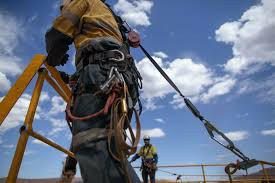


 349,500 Offered Certificates
349,500 Offered Certificates
 24/7 Online Training
24/7 Online Training
 Money Back Guarantee
Money Back Guarantee
 Fully Accredited Courses
Fully Accredited Courses

Created at: 22-02-2025 16:02
Ensuring compliance with Working at Heights regulations is pivotal for businesses operating in Ireland. Failure to adhere to these regulations not only endangers the safety of workers but can also lead to severe legal, financial, and reputational repercussions. In this post, we delve into the multifaceted consequences of non-compliance and explore how Working at Heights training can serve as a protective measure.
Working at heights involves inherent risks that can result in serious accidents, injuries, or even fatalities if safety measures are neglected. As an employer, prioritizing the safety of employees is essential, not only for their well-being but also for the sustainability of the business.
In Ireland, businesses that fail to comply with Working at Heights regulations face stringent legal penalties. The Safety, Health and Welfare at Work Act sets out the responsibilities of employers to ensure the safety of all workers. Non-compliance can lead to criminal charges, including:
The financial implications of not adhering to Working at Heights regulations extend far beyond immediate legal fines:
The long-term impacts of safety violations include reputational damage that can take years to recover from:
Several companies in Ireland have faced severe consequences due to non-compliance with Working at Heights regulations:
To safeguard against these risks, businesses should invest in certified Working at Heights training. Proper training ensures workers are equipped to follow safety protocols and utilize the appropriate equipment effectively. Opportunities for training include:
The stakes are high when it comes to compliance with Working at Heights regulations. Understanding the potential legal penalties, financial losses, and reputational damages can help businesses make informed decisions about safety practices. Investing in Working at Heights Training is a proactive measure that not only protects your workforce but also ensures the sustainability and respectability of your business.
To learn more about Working at Heights certification and explore training options, visit Ireland Safety Training or reach out via email at [email protected].